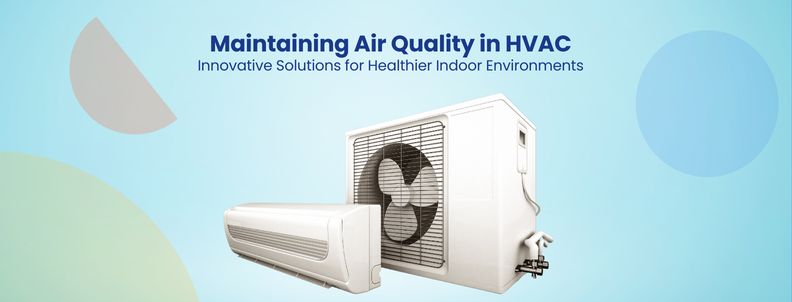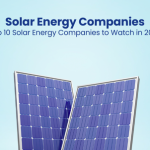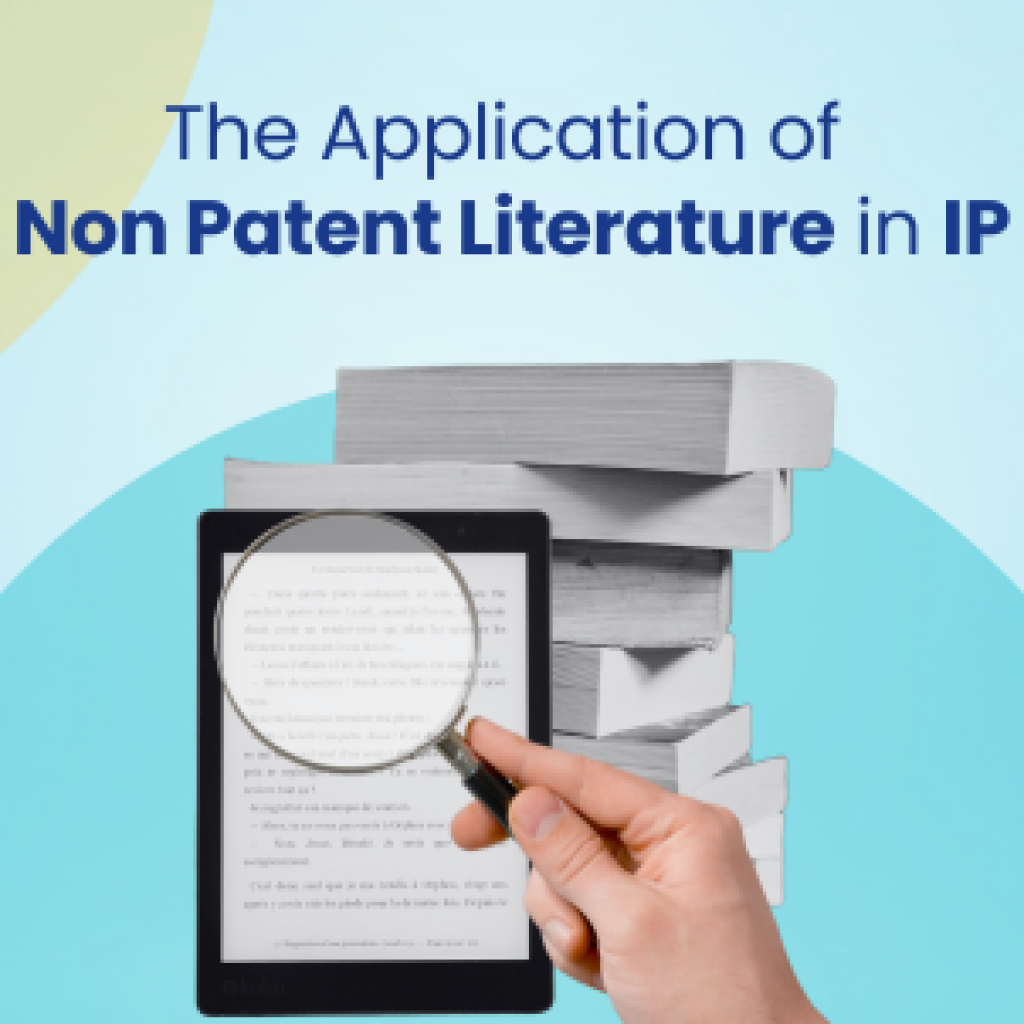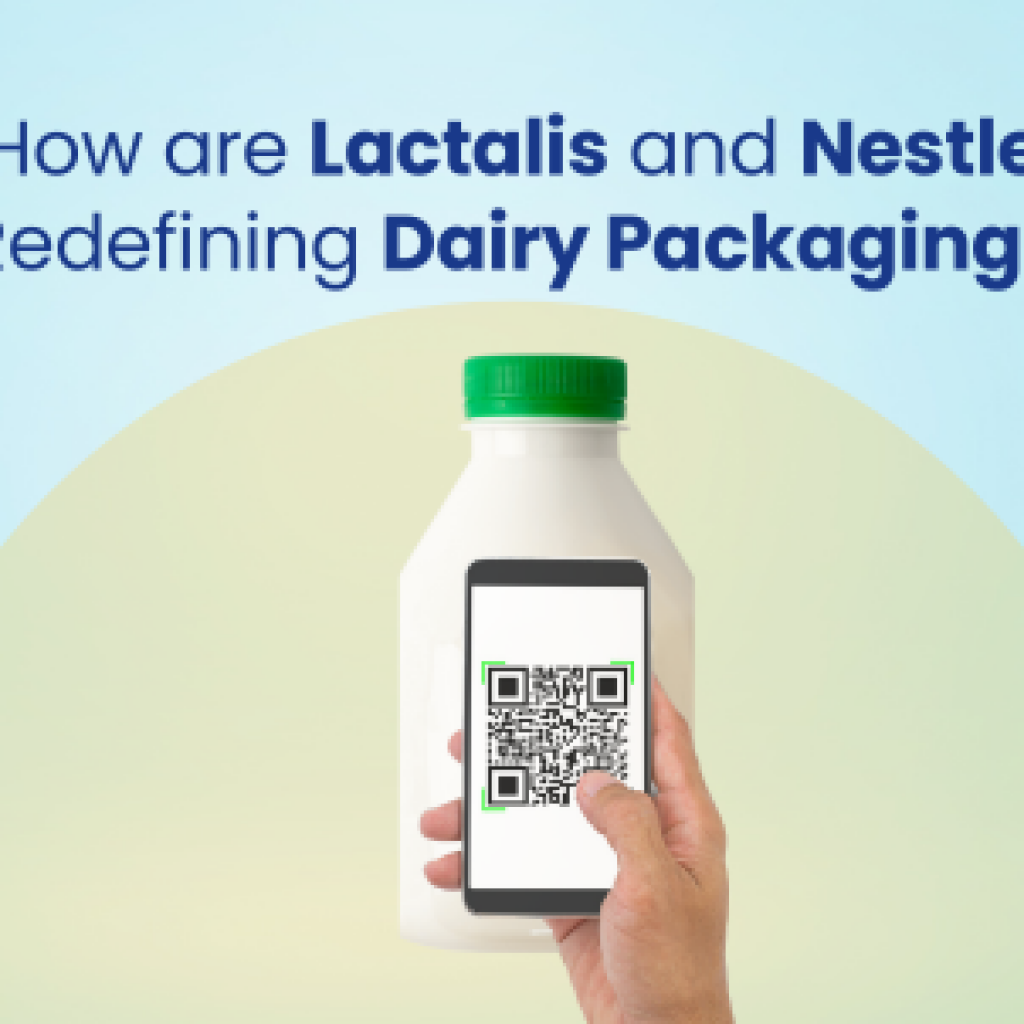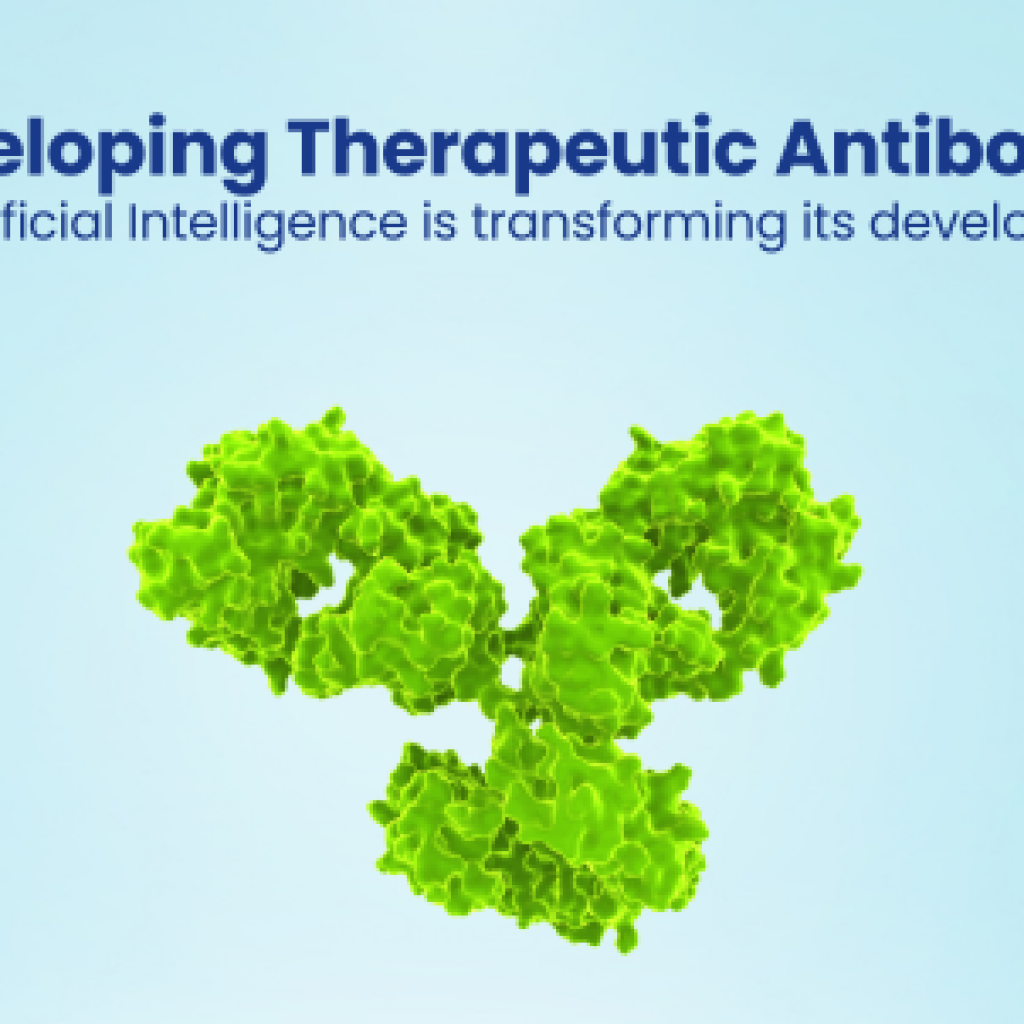The poor indoor air quality has been shown to cost the U.S. economy approximately $150 billion annually in lost productivity and medical expenses. As people spend around 90% of their time indoors, their concern for degrading indoor air quality has grown. In response, the HVAC industry is rapidly innovating, with companies developing technologies that improve air quality while saving energy.
This article focuses on the latest trends in HVAC technology, particularly in air purification and dehumidification. Our upcoming State of HVAC 2025 report will cover additional innovations, including refrigerant composition, defrosting, airflow control, and more.
Fill out the form below, and we’ll email you the first copy as soon as it goes live!
Key Trends Shaping Air Quality in HVAC Systems
Focus on Energy Efficiency and Sustainability
According to the U.S. Department of Energy, HVAC systems account for about 32% of the energy used in commercial buildings. The demand for eco-friendly HVAC solutions is growing as sustainability becomes a priority for consumers and businesses. This trend, driven by environmental awareness and the need for energy efficiency, allows businesses to reduce costs and meet regulatory requirements.
Companies like Daikin, Mitsubishi Electric, and Rheem Manufacturing are Investing in energy-efficient HVAC technologies to cut energy consumption and provide potential cost savings and compliance advantages, making sustainability a key strategic focus in the competitive market.
Integration of Smart Technologies and Automation
The integration of smart technologies is transforming HVAC systems. Sensors and control systems enable precise monitoring, predictive maintenance, and optimized performance. Automation boosts efficiency, improves reliability, and extends equipment lifespan, leading to cost savings and higher customer satisfaction. For instance, Johnson Controls’ OpenBlue platform uses AI to predict maintenance needs, reducing unexpected downtime by up to 66%.
Emphasis on User Convenience and Minimal Maintenance
User convenience and minimal maintenance are now crucial in the HVAC market. New technologies automate tasks like filter cleaning and system adjustments, reducing the need for user intervention. In the past three years, major manufacturers like Lennox, Trane, and Carrier have all introduced smart thermostats with intuitive interfaces and automatic scheduling features. This focus on ease of use enhances customer satisfaction and product differentiation, increasing customer loyalty and a stronger competitive edge.
Potential for Improved Indoor Air Quality and Health Benefits
Advanced air purification technologies elevate indoor air quality by removing contaminants and allergens. For businesses, offering these HVAC solutions strengthens their value proposition by prioritizing health, meeting market demand, and giving customers a compelling reason to choose their products over competitors. For instance, Carrier introduced its Infinity air purifier, which captures and inactivates up to 99% of select airborne pathogens.
Innovations in Air Purification for HVAC Systems
The development in air purification in HVAC systems effectively eliminates contaminants, allergens, and pollutants from the air, leading to better respiratory health and a more comfortable indoor environment. Companies are innovating with advanced technologies like ionization and aerosol-based disinfection to enhance the air quality in commercial and residential spaces.
Let’s take a look at some recent innovations and the problems they are solving –
Improving User Convenience with Automated Air Filtration
The Problem –
Traditional air filtration systems in HVAC units often suffer from inefficiencies due to the placement of the ionizing component at the suction end of the air conditioner. This design limits the air that can be effectively ionized, resulting in suboptimal air cleaning. Additionally, the ionization component can obstruct airflow and occupy significant space, reducing the system’s overall efficiency.
The Solution –
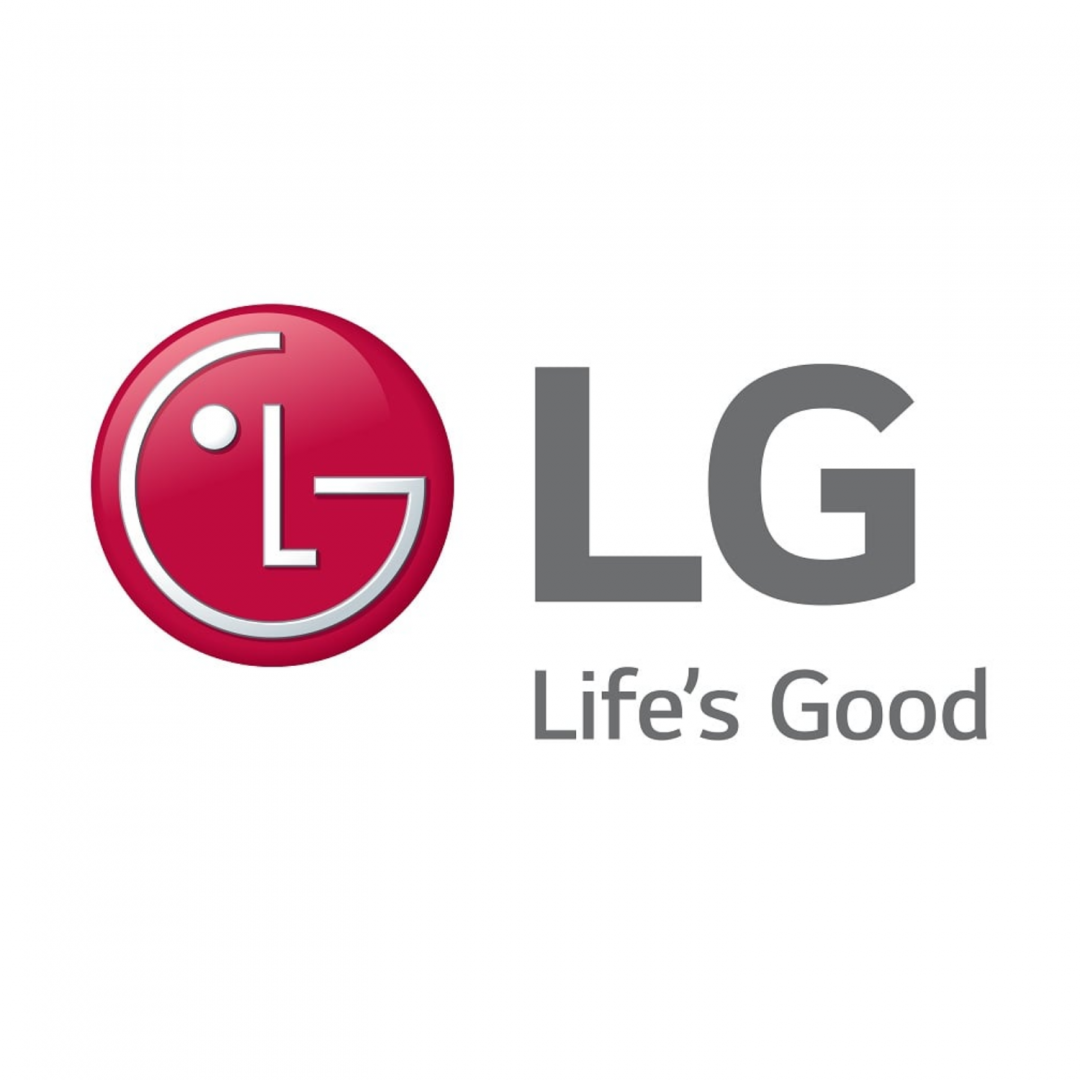
LG Electronics has developed an innovative solution involving an electrically charged device. In this design, the ionizing electrodes are positioned externally to the air conditioner’s suction grill. The system efficiently ionizes and captures dust particles in the air filter by applying a voltage through these external electrodes. Once the dust particles are captured, they are automatically separated from the filter using dielectric barrier discharge and collected in a designated dust storage area.
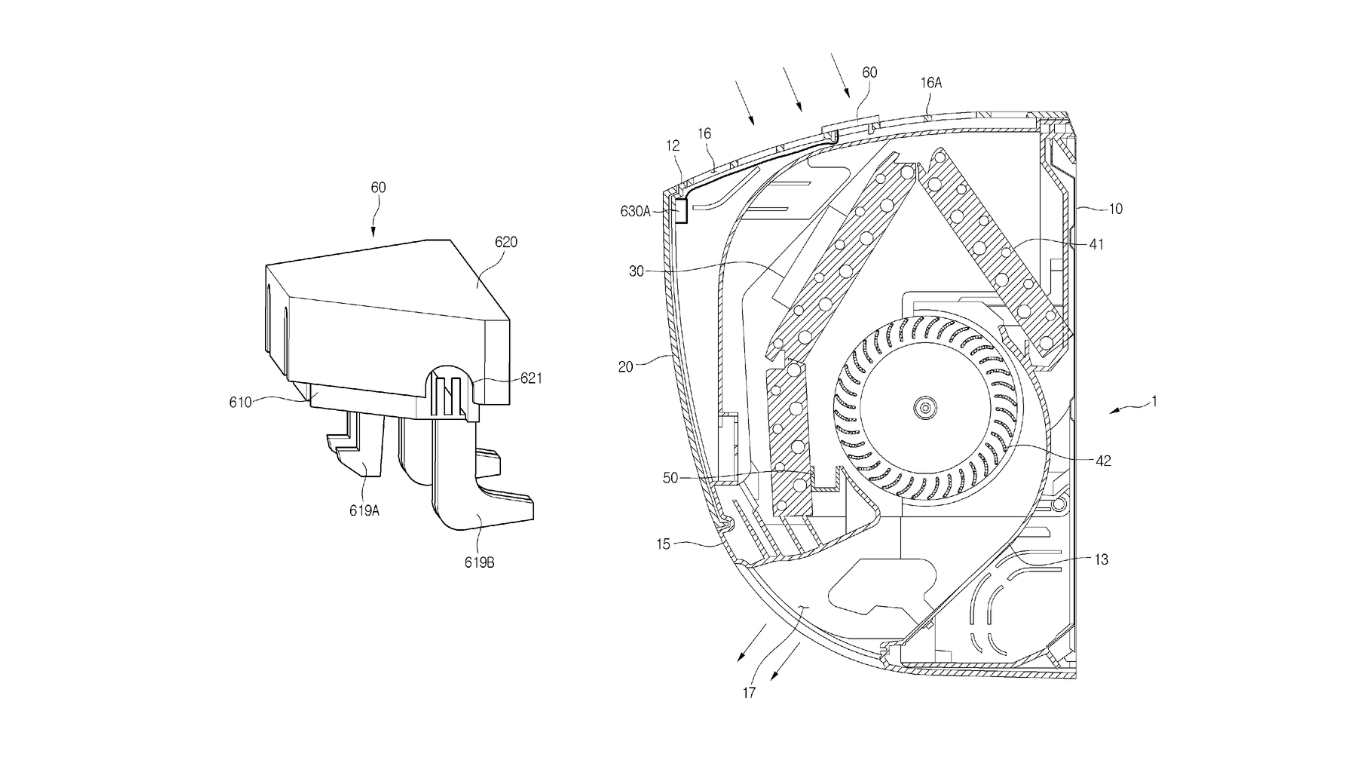
This approach not only enhances air filtration efficiency by maximizing the amount of charged dust but also improves air conditioning performance by reducing airflow obstruction. Additionally, the automated dust separation process minimizes the need for user maintenance, offering a more convenient and efficient air purification solution.
Smart Air Purifier with Dynamic Solar Cell Rotation for Efficient Energy Harvesting
The Problem –
Traditional air purifiers rely on particle sensors that continuously measure air contamination by emitting a laser beam and analyzing the scattered light from particles. While effective in gauging air quality, this constant sensor activation results in significant power consumption.
The Solution –
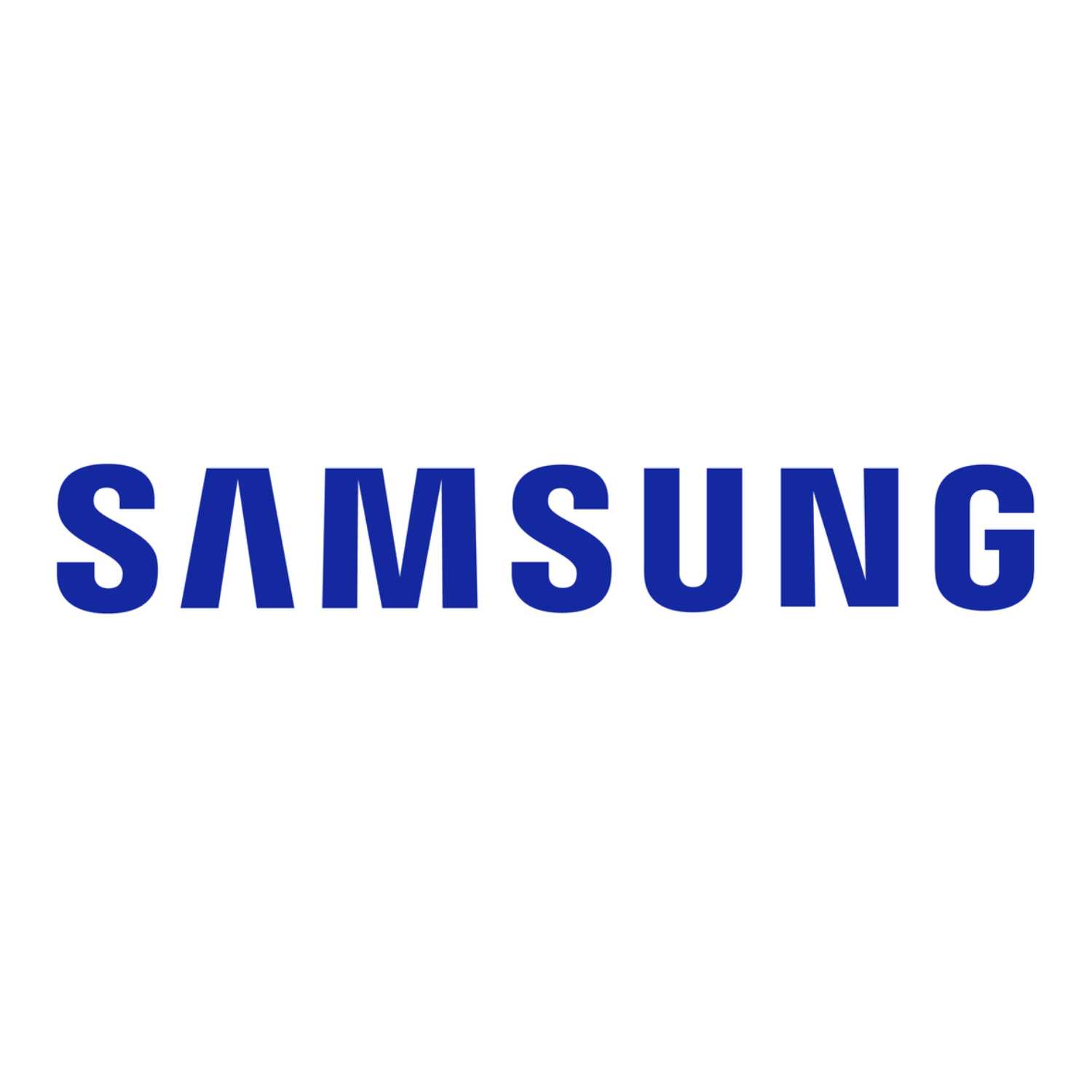
To address this issue, Samsung Electronics has developed an innovative air purifier that combines solar and battery power. The purifier is equipped with a solar cell on one side and multiple light sensors on the other. The system dynamically controls the purifier’s rotation, adjusting its position based on the light sensors to maximize exposure to sunlight for optimal solar energy harvesting.
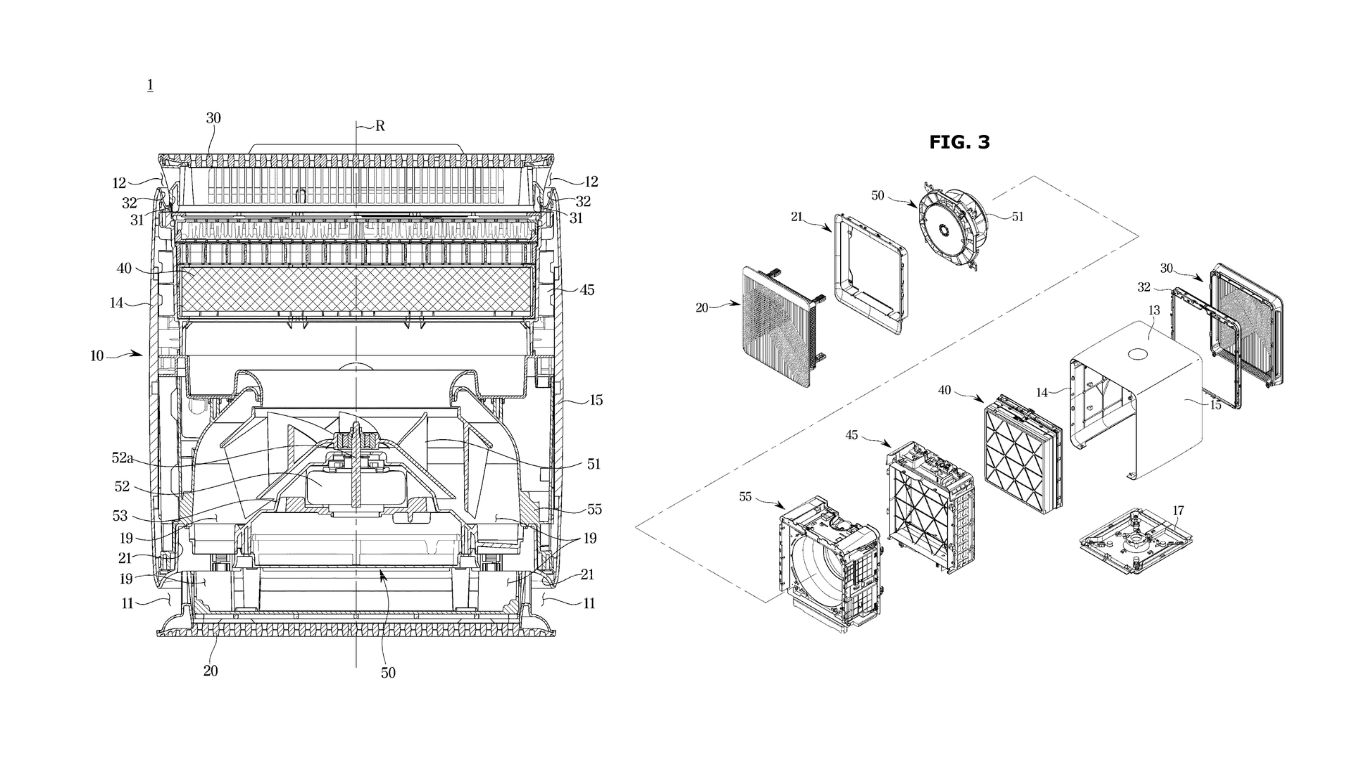
Additionally, the system includes intelligent power management that allows the purifier to switch between the internal battery and solar power, depending on the battery’s charge level. Maximizing renewable energy allows the purifier to maintain continuous sensor activity to detect air contamination without increasing overall power consumption. This innovation not only improves energy efficiency but also ensures the air purifier remains highly effective in maintaining indoor air quality.
Effective Air Cleaning with Plasma Technology and Ion-Induced Bacterial Elimination
The Problem –
Traditional plasma air purifiers often struggle with uneven plasma distribution due to the placement of plasma generators at the air inlets or outlets. This can result in insufficient plasma levels, leading to compromised disinfection. Additionally, the fan assemblies in ionic air purifiers can create air vortices due to the layout of components, causing uneven air distribution and increased noise levels.
The Solution –
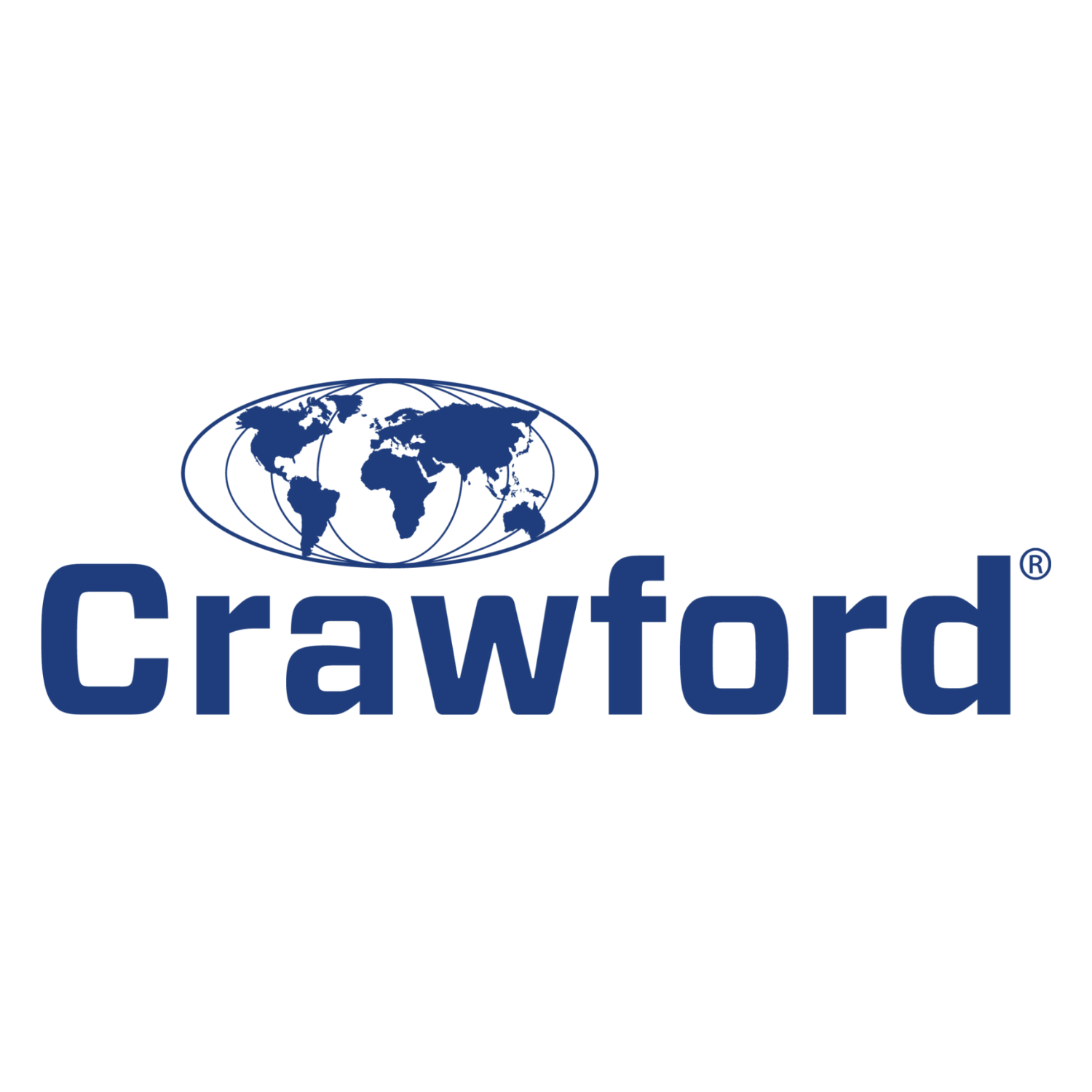
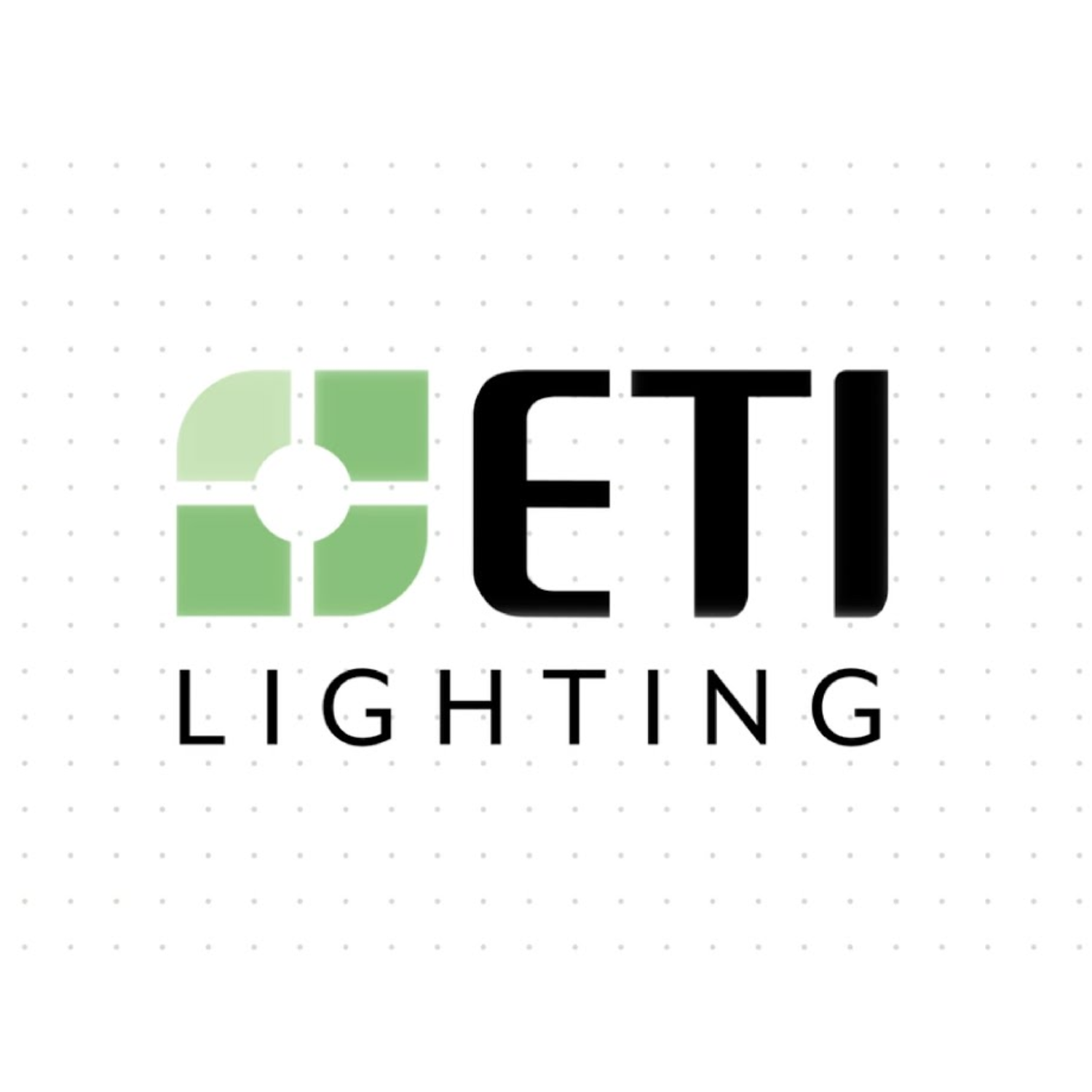
Crawford Global and ETI Solid State Lighting have developed an innovative air purification system incorporating two plasma generators within the ventilation assembly. These generators are strategically placed between the air inlet, air filter assembly, and air outlet. As air is propelled through the plasma wall and filter assembly, it undergoes sequential disinfection and sterilization.
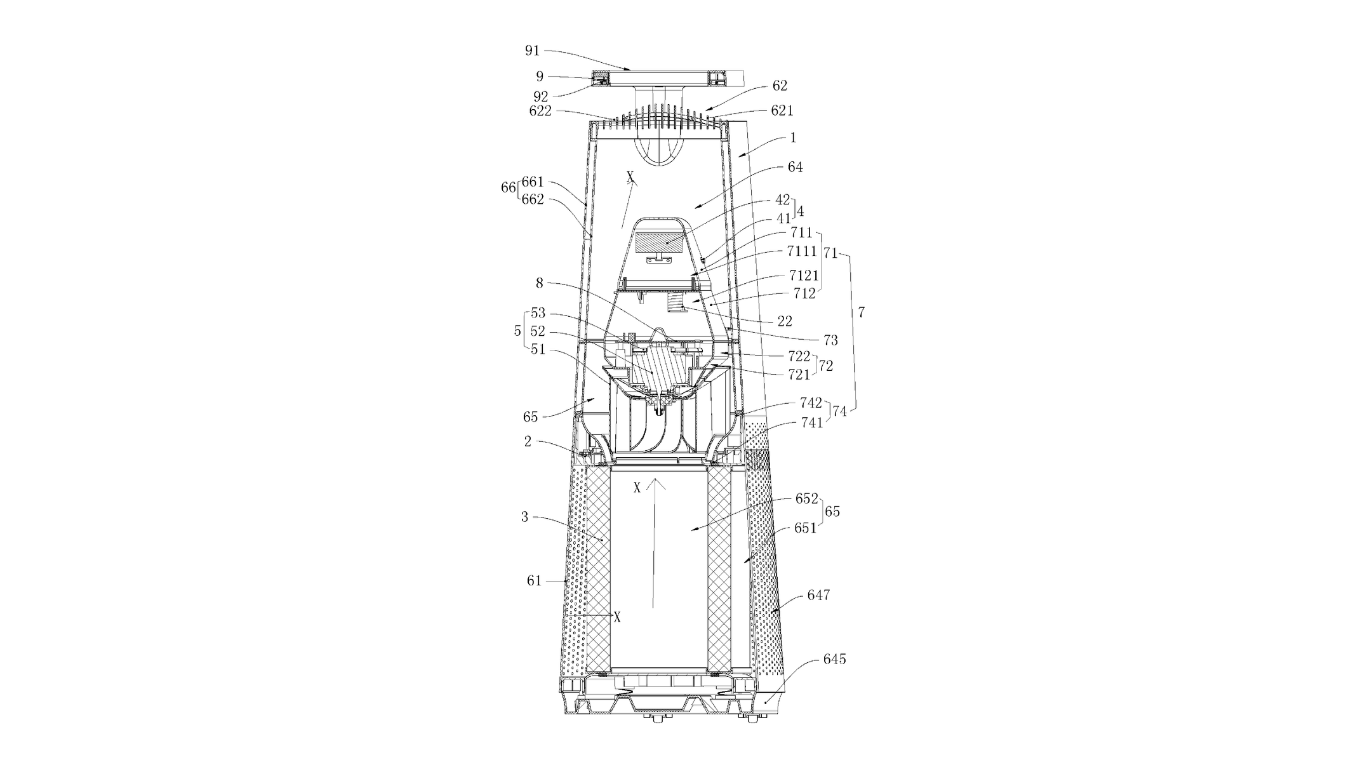
The second plasma generator, positioned near the air outlet, releases a plasma jet that combines with the treated air before being expelled into the room. This continuous release of positive and negative ions results in a reaction within the indoor air, producing significant energy during charge neutralization. These ion-induced changes effectively disrupt bacterial structures, enhancing disinfection and improving air quality. This innovation addresses the shortcomings of existing plasma and ionic air purifiers.
Advancements in Dehumidification Technology
Dehumidification is another crucial element of HVAC systems, integral to maintaining indoor comfort, air quality, and the structural integrity of buildings. Excessive humidity not only creates discomfort but also contributes to the growth of mold and dust mites, which can degrade air quality. Additionally, effective dehumidification enhances the efficiency of air conditioning systems, leading to reduced energy consumption and lower operational costs.
To address these challenges, companies are advancing dehumidification technologies. Innovations include using liquid desiccant regenerators and integrating dehumidification, cooling, and heating into unified systems with superchargers. These advancements are essential in improving indoor air quality and energy efficiency in HVAC systems.
Let’s take a look at some of the recent advancements and the problems being solved in detail –
SuperCell – Advanced Liquid Absorbent Dehumidification Technology
The Problem –
Traditional dehumidification systems, especially in humid regions, often struggle with energy efficiency, consuming over 50% of energy loads without consistently delivering optimal moisture removal. This inefficiency is partly due to the reduced effectiveness of desiccants after multiple uses, as their concentration decreases over time.
The Solution –
To address this, Mojave Energy Systems and Palo Alto Research Centre developed an innovative solution called the “SuperCell.” This device functions as an electrochemically regenerated liquid desiccant dehumidifier. The system uses electricity and specially designed membranes to perform desalination (removing salt from water) and salinization (concentrating salt). It features two electrodes separated by three unique membranes, with a liquid “redox shuttle” carrying ions between the electrodes when an electrical potential is applied.
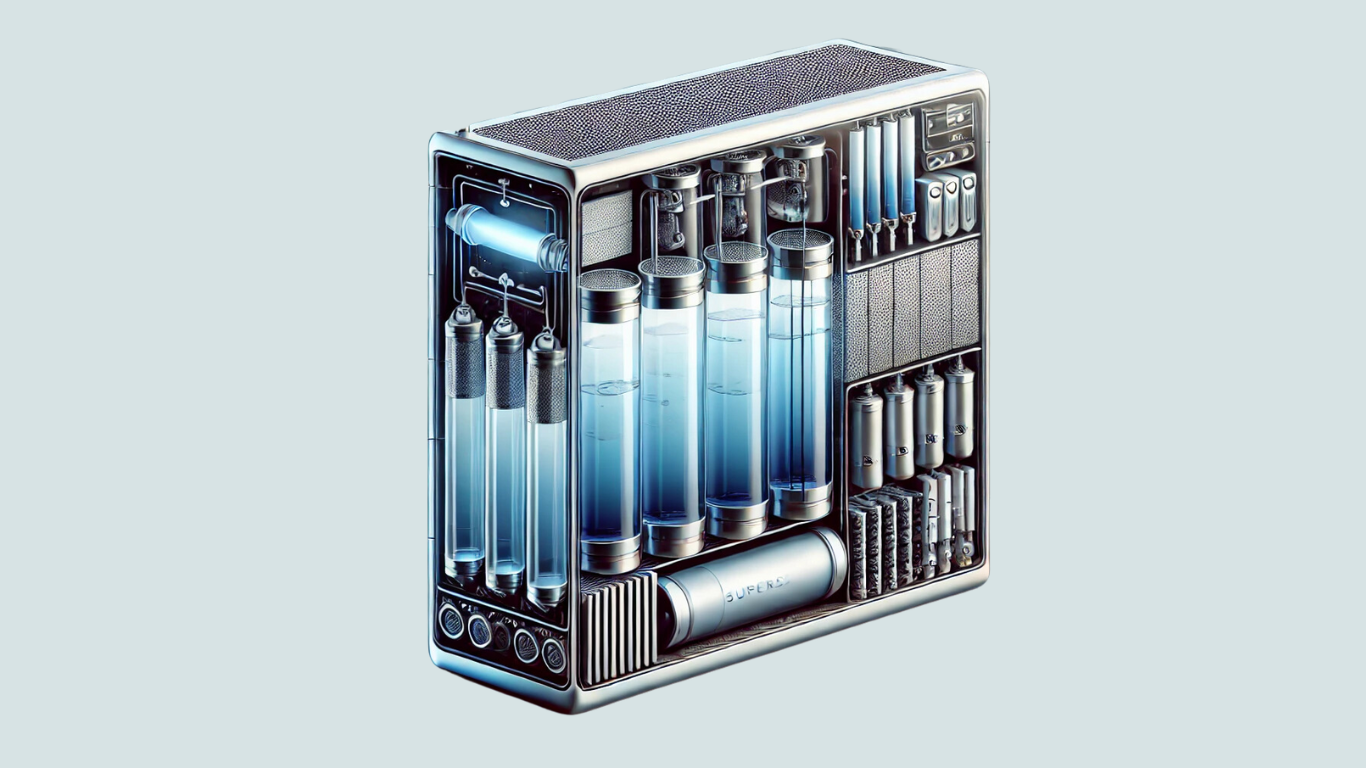
This ion movement transfers salt ions between chambers, altering the salt concentration in each. As air passes through the electrochemical cell, the system efficiently dehumidifies the air. The SuperCell operates as a closed-loop system, significantly reducing waste and minimizing environmental impact while providing a more energy-efficient and effective dehumidification solution.
Enhancing Efficiency with Multi-Concentration Liquid Absorbent Regeneration System
The problem –
Liquid absorbent regenerators were developed as a more energy-efficient alternative to traditional dehumidification systems. However, existing systems only perform dehumidification when the absorbent concentration is below a certain threshold, leading to high energy consumption and increased operational costs.
The Solution –
Mojave Energy Systems introduced a liquid absorbent regeneration system that utilizes multiple regenerators with varying concentrations. In this system, the air to be dehumidified passes over a dehumidifying air contactor, which removes moisture and dilutes the concentrated liquid absorbent solution. This approach allows the system to dehumidify air at different concentration levels.
The system also includes a water-cooled heat exchanger to remove latent heat from the absorbent solution, which can be reused within the HVAC system. Staged regeneration reduces energy usage, costs, and operational complexity. Since the energy required for regeneration is non-linearly proportional to the absorbent concentration, partial regeneration results in significant energy savings. Additionally, the staged air contactor provides multiple opportunities for external cooling, enhancing efficiency and avoiding the inefficiencies and complications associated with single-point or internal cooling.
All-in-One Climate Control System: Integrated Cooling, Heating, and Dehumidification
The Problem –
Current mobile air conditioning systems often fail to provide a solution for heating, cooling, and dehumidification, and existing combined systems tend to be inefficient and fuel-intensive.
The Solution –
Energy Quest Technologies has developed a high-efficiency HVAC system that integrates cooling, heating, and dehumidification into a unified package. This innovative system features two superchargers designed to increase the volume of air passing through the HVAC unit. This gearbox connects to the superchargers via separate output shafts and evaporation coils for cooling and dehumidification.
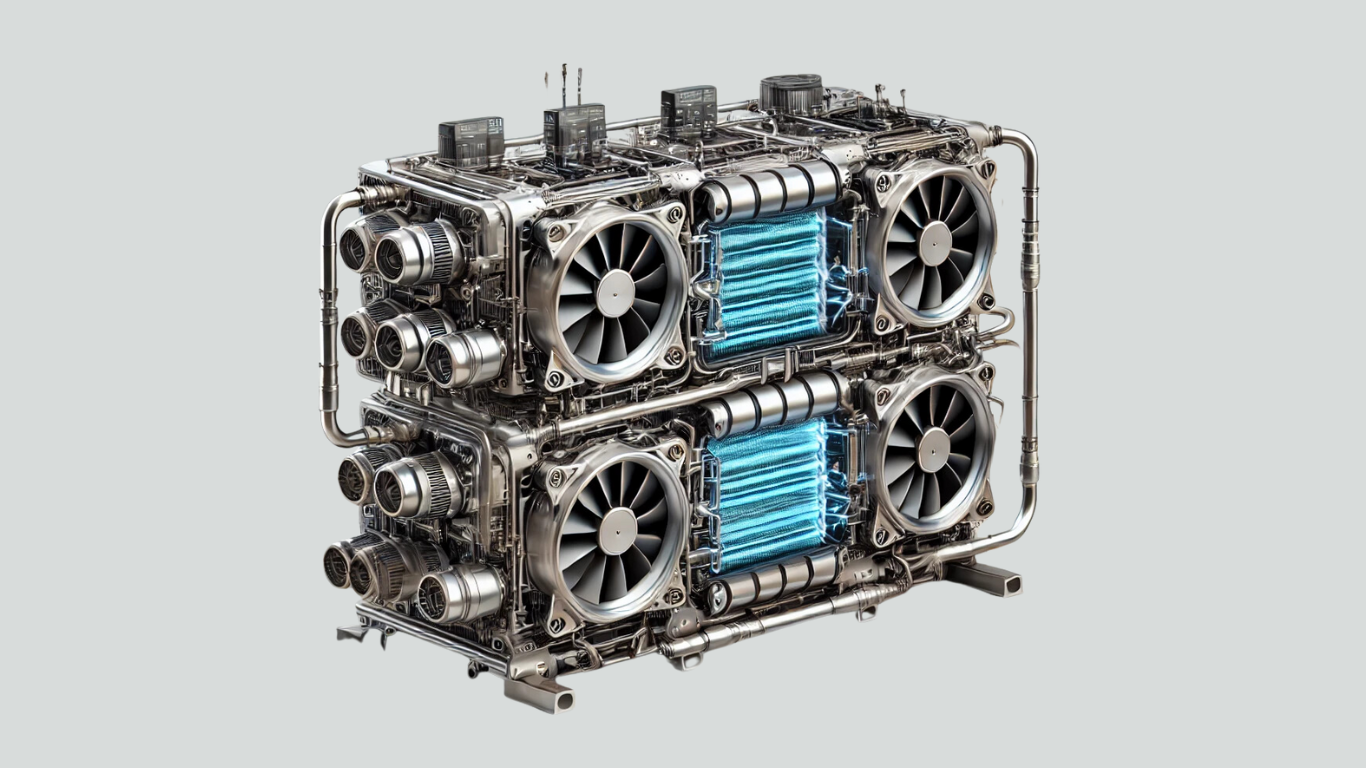
The evaporation coils between the superchargers and the system’s inlet/outlet cool the air and remove humidity by condensing moisture on a cold surface. This process enhances both air cooling and dehumidification. Additionally, a heater is strategically placed between the supercharger and outlet to warm the air when necessary. This enables the system to efficiently manage cooling, heating, and dehumidification in a single, streamlined process.
Future Outlook
Emerging technologies such as AI, IoT, and advancements in materials science are set to transform the future of HVAC systems. These innovations promise to enhance real-time monitoring, adaptive control, and predictive maintenance, ultimately improving their efficiency, durability, and lifespan.
As demand for improved indoor air quality and energy efficiency grows across various sectors, new market opportunities are arising, including innovative business models like “air quality as a service.” However, businesses must also navigate challenges such as high implementation costs, regulatory hurdles, and the need for consumer education.
Survive in this evolving market by overcoming these challenges through strategic planning, R&D investment, and industry collaboration.
Click the button below to schedule a consultation with our experts today.
Authored By – Manas Puti and Moin Khan, Patent Analytics
Edited By – Ridhima Mahajan, Market Research
Also Read – Leveraging the latest technology to create Smart Buildings

